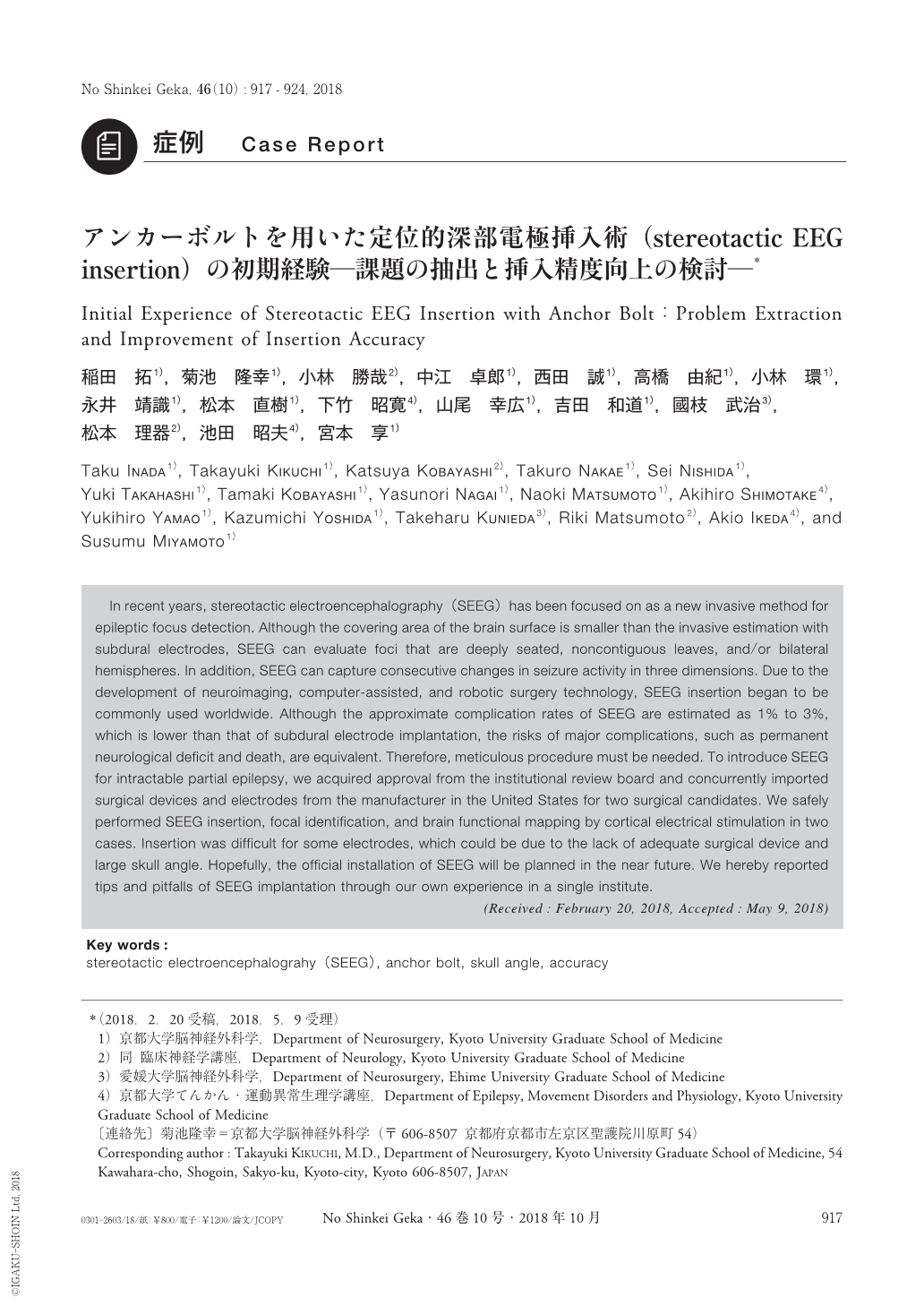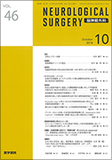Japanese
English
- 有料閲覧
- Abstract 文献概要
- 1ページ目 Look Inside
- 参考文献 Reference
Ⅰ.はじめに
定位的深部電極挿入術(stereotactic electroencephalography[SEEG]insertion)は,難治性てんかんに対するてんかん焦点の同定と脳機能評価の手法として,1950年代にTalairachらがフランスで確立した8).記録できる皮質の範囲は硬膜下電極留置に比べて極めて狭いが,脳深部(内側側頭葉・帯状回・半球間裂病変・後前頭眼窩野・島回・脳溝深部)および非隣接脳葉や両側半球に広がるてんかん性焦点の評価が可能であり,発作の広がり・ネットワークを三次元的に理解できる利点をもつと考えられる.また,硬膜下電極留置術で焦点診断ができなかった症例や,術後再燃例に対しても有効である9).電極を精確かつ安全に挿入するため,開発当初は定位フレームを装着した状態で血管撮影によって解剖学的情報を得る必要があり,挿入手技は複雑であり,修練を要するものであった.しかし,放射線・画像診断技術とコンピューター解析・ロボット技術の発達により,2000年代には北米にも普及し始めた4).SEEGの合併症は,全体で1〜3%と硬膜下電極留置よりも低いが,永続的な神経症状の遺残や死亡といった重篤な合併症の危険性は同等であり,留置には十分に注意を要する1-7,9,10).アンカーボルトや,より細く電極数が多い深部電極などは日本では未承認医療機器である.このため,われわれは施設内倫理委員会の承認(IRB:C1192)を取得し,米国から必要物品を輸入して所定の手続きを行い,同意を得た2症例に対してSEEGを留置した.未だ経験数が少なく予備的な検討ではあるが,今回われわれはSEEGの挿入手技とその精度に関する注意点について,文献的考察を加えて報告する.
In recent years, stereotactic electroencephalography(SEEG)has been focused on as a new invasive method for epileptic focus detection. Although the covering area of the brain surface is smaller than the invasive estimation with subdural electrodes, SEEG can evaluate foci that are deeply seated, noncontiguous leaves, and/or bilateral hemispheres. In addition, SEEG can capture consecutive changes in seizure activity in three dimensions. Due to the development of neuroimaging, computer-assisted, and robotic surgery technology, SEEG insertion began to be commonly used worldwide. Although the approximate complication rates of SEEG are estimated as 1% to 3%, which is lower than that of subdural electrode implantation, the risks of major complications, such as permanent neurological deficit and death, are equivalent. Therefore, meticulous procedure must be needed. To introduce SEEG for intractable partial epilepsy, we acquired approval from the institutional review board and concurrently imported surgical devices and electrodes from the manufacturer in the United States for two surgical candidates. We safely performed SEEG insertion, focal identification, and brain functional mapping by cortical electrical stimulation in two cases. Insertion was difficult for some electrodes, which could be due to the lack of adequate surgical device and large skull angle. Hopefully, the official installation of SEEG will be planned in the near future. We hereby reported tips and pitfalls of SEEG implantation through our own experience in a single institute.

Copyright © 2018, Igaku-Shoin Ltd. All rights reserved.


